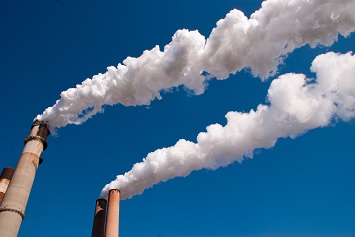In a comment letter, Illinois Attorney General (AG) Kwame Raoul and 10 other state AGs have urged the U.S. EPA to propose regulatory revisions that will adequately protect the public and the environment from the risks posed by emissions of ethylene oxide (EtO) from commercial sterilization and fumigation operations. High on the list of requested revisions are requirements to reduce emissions to the atmosphere from each exhaust point by at least 99.9% and capture 100% of all generated EtO emissions.

EtO is commonly used by companies to sterilize medical equipment that may be damaged by steam sterilization. The Food and Drug Administration reports that about 50% of all sterile medical devices in the United States—about 20 billion devices a year—are sterilized with EtO.
1994 Rule
The letter responds to an advance notice of proposed rulemaking (ANPR) issued in December 2019 in which the EPA solicited information about the existing (1994) National Emissions Standards for Hazardous Air Pollutants (NESHAP) covering EtO operations. The NESHAP applies to both major and small (area) sources that use at least 1 ton of EtO in sterilization or fumigation in each 12-month period.
In 2006, the EPA completed a residual risk and technology review of the NESHAP and determined that no changes were in order for the standards. But in 2016, the Agency updated its risk evaluation of the “inhalation carcinogenicity” of EtO.Then in 2018, the Agency’s National Air Toxics Assessment (NATA) followed up on the risk evaluation and found that EtO significantly contributes to potential elevated cancer risks in some census tracts across the United States. Overall, the EPA appears to concede in the ANPR that the 1994 NESHAP does not meet the Clean Air Act requirement that the standard protect human health with an “ample margin of safety.”
CEVs and PTEs
Generally, in the ANPR, the Agency requested information on available control technologies for reducing emissions of EtO. More specific requests applied to usage data for individual facilities; the magnitude of fugitive emissions from the industry; the industrywide use of permanent total enclosures (PTEs) to capture EtO emissions; leak detection and repair to reduce the amount of EtO injected into the sterilization chamber; and controls to reduce the risk of explosions in chamber exhaust vents (CEVs). (In the 1990s, there were multiple explosions at EtO sterilization facilities, and the EPA suspended the NESHAP for several years. Most of the rule was later reinstated, although requirements for CEVs, which were found to be the location of most of the explosions, remained suspended.)
Meetings with Industry
Also in the ANPR, the EPA indicated that it held teleconferences and meetings with 12 different EtO trade associations, air pollution control device manufacturers, industry representatives, and other government agencies “to better understand sterilization processes, emissions (including measurement and monitoring), current control techniques, and how widely such techniques are used, as well as how control efficiencies are determined and guaranteed by manufacturers.”
In the ANPR, the Agency identified 108 facilities in the EtO sterilization source category, including 35 facilities owned by small businesses. The Agency said it was particularly interested in obtaining information on the extent to which facilities owned by small businesses differ operationally from facilities owned by larger businesses, including whether the emissions profiles differ consistently.
1994 Requirements
In the 1994 NESHAP, the EPA required that emissions from the sterilization chamber vent (SCV) be controlled by at least 99% at facilities using 1 or more tons of EtO per year. For aeration room vents (ARVs) at sources using 10 or more tons of EtO per year, the EPA required a 99% emissions reduction or a 1-part-per -million (ppm) concentration limit. The December 1994 rule also set requirements for the CEVs. Sources using between 1 and 10 tons of EtO were required to lower the EtO concentration in the chamber to at least 5,300 ppm, whereas sources using more than 10 tons of EtO were required to reduce emissions by 99%.
Illinois’s Law
In June 2019, the state of Illinois enacted what it describes as the nation’s most stringent law regulating commercial sterilization facilities. The law requires that commercial sterilization sources in Illinois capture and demonstrate that they capture 100% of all EtO emissions (including fugitive and CEV emissions), and reduce EtO emissions to the atmosphere from each exhaust point at the EtO sterilization source by at least 99.9% or to 0.2 ppm. The 100% capture requirement has resulted in the implementation of PTEs at facilities in Illinois.
Recommended Revisions
Recommendations in the AGs’ comments are based on the Illinois requirements.
The AGs state that along with extending the NESHAP to include facilities that use 1 ton or more of EtO in any consecutive 12-month period, the revised NESHAP should require that commercial sterilization facilities:
- Reduce emissions to the atmosphere from each exhaust point by at least 99.9%.
- Capture 100% of all generated EtO emissions.
- Conduct all required emissions testing under operating conditions that are representative of maximum emissions.
- Install, operate, calibrate, and maintain a continuous emissions monitoring system.
- Submit dispersion modeling that demonstrates its EtO emissions achieve the emissions reductions necessary to protect human health.
The AGs noted that in May 2019, the EPA indicated that it planned to propose a revised NESHAP in summer 2020.
